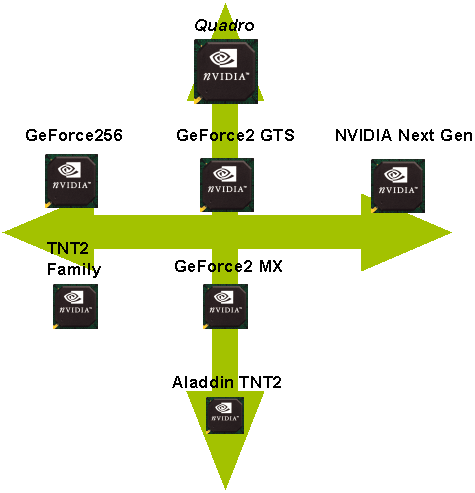As one of the main creators of the 6-month product cycles our gaming graphics card industry currently operates on, NVIDIA sort of owes it to everyone to produce both cost effective and extremely high performance parts. If they expect us to keep on adjusting to new $300 graphics accelerators being released every 6 months they should also be obligated to provide a solution in the $100 - $150 range that doesn’t perform like most other “value” graphics cards.
While their current flagship product, the GeForce2 GTS, is receiving much more competition than the original GeForce ever did in terms of performance, it is safe to say that NVIDIA is still sitting pretty. With a very popular high end part such as the Quadro (as well as a couple of successors to that due out shortly) and a very solid product in the GeForce2 GTS for the performance desktop segment, it was only a matter of time before NVIDIA attempted to completely dominate the market with a cost effective entry as well.
Not too long ago we discovered that AMD’s Duron has restored meaning to the axiom “cheap doesn’t have to mean slow” and now NVIDIA is attempting to continue that recent tradition with the release of the GeForce2 MX, what we’ve been calling the NV11 for the past few months.











3 Comments
View All Comments
Dr AB - Friday, May 8, 2020 - link
So 20 years laters I can say it is analogous to MAX-Q cards that we see today? Seems same logic behind it.Dr AB - Friday, May 8, 2020 - link
*laterOtritus - Friday, October 2, 2020 - link
The logic behind MAX-Q is severely reduce clock speeds and voltage to reduce power consumption. This is analogous to entry-level gpus such as tu117 in the gtx 1650. Cut down the hardware to reduce cost and power consumption, and have slightly lower clocks to hit tdp targets.